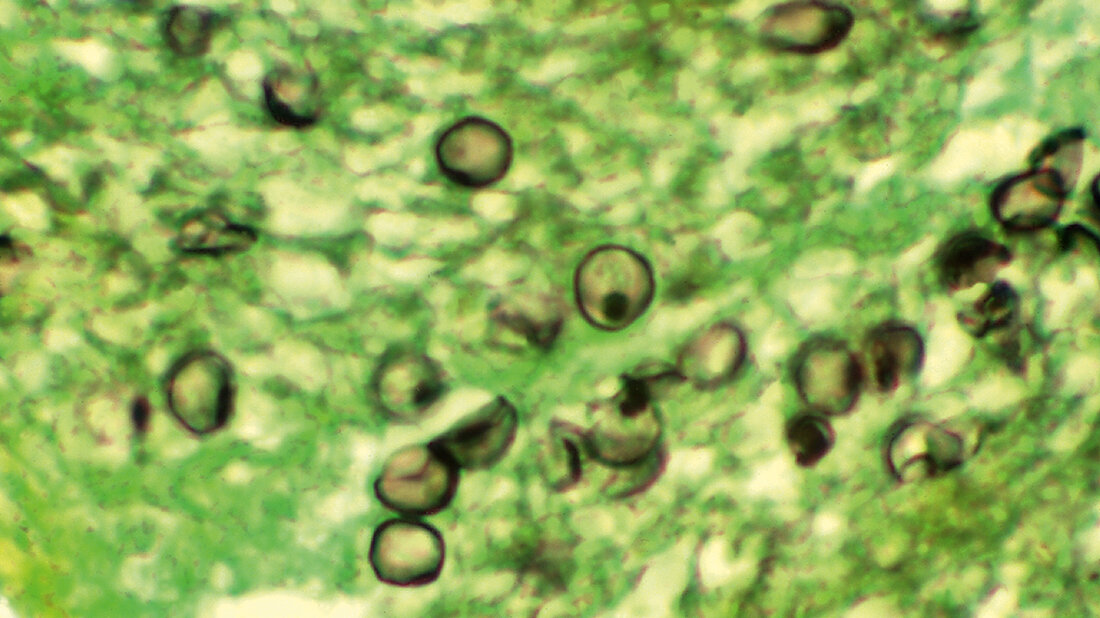Zusammenfassung
Zur Behandlung von systemischen Pilzinfektionen stehen nur wenige Substanzklassen zur Verfügung, nämlich Polyene, Azole und Echinocandine. Die Polyene attackieren Ergosterol in der zytoplasmatischen Membran der Pilze; die Azole hemmen die Bildung von Ergosterol; die Echinocandine unterbinden die Synthese von 1,3-β-Glucan in der Zellwand der Pilze. Primäre Resistenzen kommen bei einigen Pilzen vor. Pneumocystis zum Beispiel ist resistent gegen Amphotericin B und gegen Azole, weil die kein Ergosterol ausbilden. Auch sekundäre Resistenz unter dem Einfluss von Antimykotika kann entstehen. Entweder weil der Zugang des Antimykotikums ans Target unterbunden wird. Effluxpumpen spielen dabei eine Rolle. Oder das Target ist mutiert und der Wirkstoff kann nicht binden und seine Aufgabe erfüllen. Eine Bildung von Enzymen, welche die Antimykotika zerstören, gibt es nicht! Auch die vertikale Verbreitung von Resistenzeigenschaften durch mobile genetische Elemente, wie Transposons und Plasmide, findet nicht statt. Eine explosionsartige Ausbreitung von Resistenzen beobachtet man bei Pilzen also weitaus seltener. Eine horizontale Ausbreitung, wobei die Resistenz während der Vermehrung auf die Nachkommenschaft vererbt wird, ist auch bei Pilzen möglich.
Schlüsselwörter: Pilze, Infektionen, Antimykotika, Pilzresistenz
Abstract
There are only few classes of drugs available for the therapy of systemic fungal infections, namely polyenes, azoles and echinocandins. Polyens attack ergosterol in the cytoplasmic membrane of fungi; azoles inhibit the formation of ergosterol; echinocandins interfere with the production of (1,3)-β glucan in the cell wall. Primary resistance occurs in a few fungi, for example in Pneumocystis, which does not yield ergosterol. Secondary resistance may also develop under the influence of antimycotics. The access of antimicrobials to their target is blocked for example by means of efflux pumps. Or, the target has undergone mutations, so that the agent is no longer able to bind and exert his function. But the formation of enzymes destroying the antimycotics has not yet been found in fungi. In addition, the vertical spreading of resistance properties by mobile genetic elements such as transposons and plasmids are unknown in fungi. Hence, explosive dissimination of resistant fungi is rare. Of course, horizontal spreading due to bequested transfer of resistance traits during multiplication occurs in fungi, too.
Keywords: fungi, infections, antimycotics, fungal resistence
DOI: 10.53180/MTIMDIALOG.2024.0740
Entnommen aus MT im Dialog 10/2024
Dann nutzen Sie jetzt unser Probe-Abonnement mit 3 Ausgaben zum Kennenlernpreis von € 19,90.
Jetzt Abonnent werden






